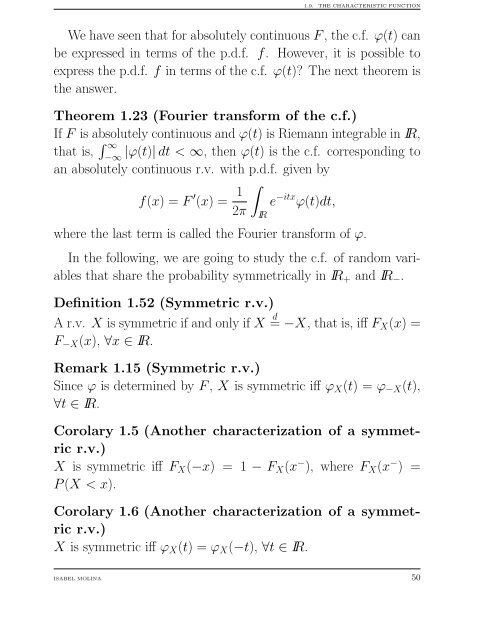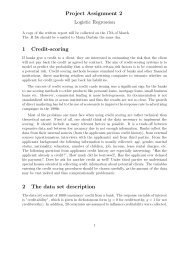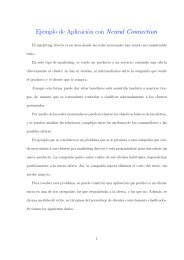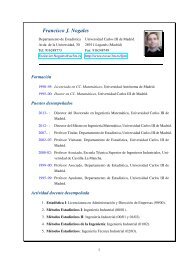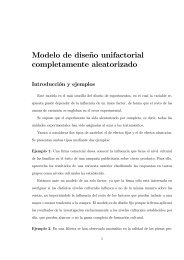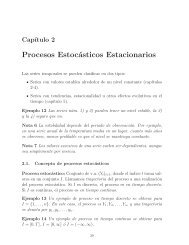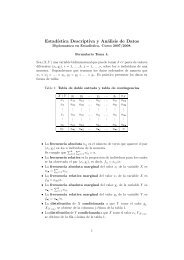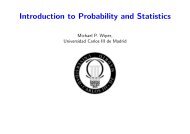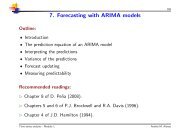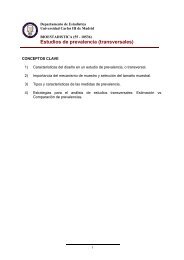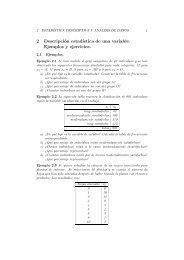Slides Chapter 1. Measure Theory and Probability
Slides Chapter 1. Measure Theory and Probability
Slides Chapter 1. Measure Theory and Probability
You also want an ePaper? Increase the reach of your titles
YUMPU automatically turns print PDFs into web optimized ePapers that Google loves.
<strong>1.</strong>9. THE CHARACTERISTIC FUNCTION<br />
We have seen that for absolutely continuous F, the c.f. ϕ(t) can<br />
be expressed in terms of the p.d.f. f. However, it is possible to<br />
express the p.d.f. f in terms of the c.f. ϕ(t)? The next theorem is<br />
the answer.<br />
Theorem <strong>1.</strong>23 (Fourier transform of the c.f.)<br />
If F is absolutely continuous <strong>and</strong> ϕ(t) is Riemann integrable in IR,<br />
that is, ∫ ∞<br />
−∞<br />
|ϕ(t)|dt < ∞, then ϕ(t) is the c.f. corresponding to<br />
an absolutely continuous r.v. with p.d.f. given by<br />
f(x) = F ′ (x) = 1 ∫<br />
e −itx ϕ(t)dt,<br />
2π<br />
where the last term is called the Fourier transform of ϕ.<br />
In the following, we are going to study the c.f. of r<strong>and</strong>om variables<br />
that share the probability symmetrically in IR + <strong>and</strong> IR − .<br />
Definition <strong>1.</strong>52 (Symmetric r.v.)<br />
A r.v. X is symmetric if <strong>and</strong> only if X d = −X, that is, iff F X (x) =<br />
F −X (x), ∀x ∈ IR.<br />
Remark <strong>1.</strong>15 (Symmetric r.v.)<br />
Since ϕ is determined by F, X is symmetric iff ϕ X (t) = ϕ −X (t),<br />
∀t ∈ IR.<br />
Corolary <strong>1.</strong>5 (Another characterization of a symmetric<br />
r.v.)<br />
X is symmetric iff F X (−x) = 1 − F X (x − ), where F X (x − ) =<br />
P(X < x).<br />
Corolary <strong>1.</strong>6 (Another characterization of a symmetric<br />
r.v.)<br />
X is symmetric iff ϕ X (t) = ϕ X (−t), ∀t ∈ IR.<br />
IR<br />
ISABEL MOLINA 50


